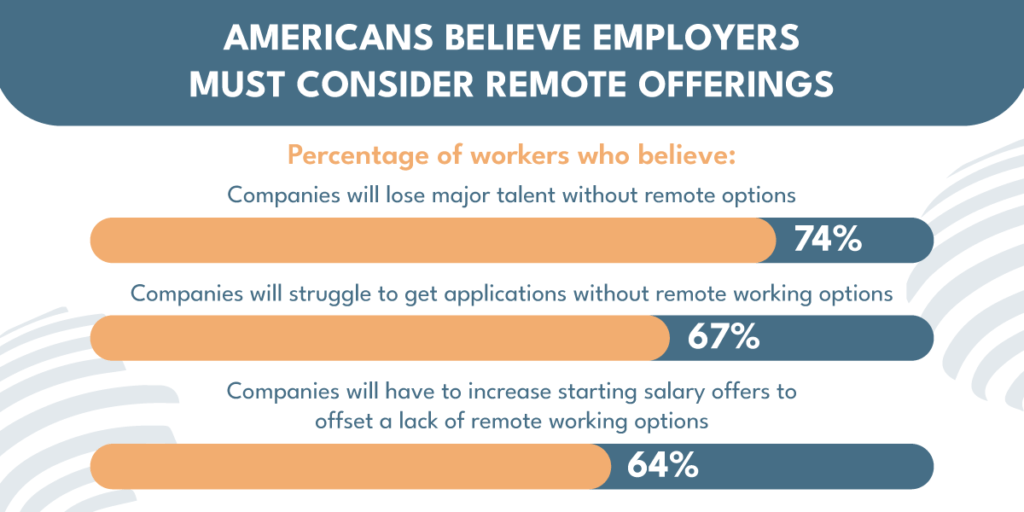Remote work is no longer a temporary option but a permanent reality for many american companies. The pandemic accelerated the adoption of this work model, highlighting its multiple benefits for both companies and employees. Find out more about how to take advantage of remote work below.
Benefits of remote work for companies
Costs reduction
Remote work allows companies to save on office expenses such as rent, utilities and supplies.
Access to global talent
Companies can hire the best talent regardless of their geographic location.
Increased productivity
Studies have shown that remote employees are often more productive than those who work in the office.
Better work-life balance
Remote work offers employees greater flexibility in managing their time and responsibilities, which can lead to greater job satisfaction.
Higher employee retention
Companies that offer remote work options have a higher employee retention rate.

Fuente: https://www.goodhire.com/
How to overcome the obstacles of remote work in your company
Establish clear policies and practices
Companies should establish clear policies and practices around remote work, including the use of communication and collaboration tools, time management and work/life boundaries.
Providing the right technology
Companies must provide the right technology, including video conferencing tools and access to online databases and documents, to ensure that employees can work efficiently and collaboratively.
Maintaining a good communication
One of the biggest concerns for employers when considering remote work is the difficulty of maintaining effective communication between team members.
In an office environment, it is easy to see who is working on what, and managers can walk down the hallways and have casual conversations with employees. In a remote environment, this can be more difficult, but there are solutions to overcome this barrier.
One tool for maintaining communication is the use of online communication applications such as Slack, Microsoft Teams or Zoom. These applications allow team members to communicate effectively through text messaging, voice calls and video conferencing. In addition, these tools can also be used to share files and collaborate on projects, which can improve team efficiency and productivity.
Maintaining employee motivation and engagement
When employees work from home, it is easy for them to feel isolated or disconnected from the company. To avoid this, employers can set clear goals and objectives and regularly communicate team results and achievements.
In addition, managers can organize regular online meetings to discuss team goals and provide constructive feedback.
Tips for successful remote work implementation
Setting clear expectations
It is important to define expectations in terms of communication, collaboration and performance.
Providing the right tools
Remote employees need access to the tools and technology necessary to do their jobs effectively.
Encourage communication and collaboration
It is important to create opportunities for remote employees to communicate and collaborate with each other.
Building a culture of trust
Trust is essential to the success of remote work.
Being flexible
It is critical to be flexible and adaptable to the needs of remote employees.
Remote work is a growing trend in the United States and many companies are finding that it can be a beneficial way to operate. If you are considering implementing remote work options in your company, there are a number of resources available to get you started.
It is key to keep in mind that remote work is not right for every company or employee. Some organizations may find that they need their employees to be in the office to collaborate effectively or to access specific equipment and resources. In addition, some employees may prefer to work in the office because it provides a more structured and social environment.
If you are considering remote work for your company, it is important to carefully evaluate your specific needs and requirements to determine if it is the best option for you.
